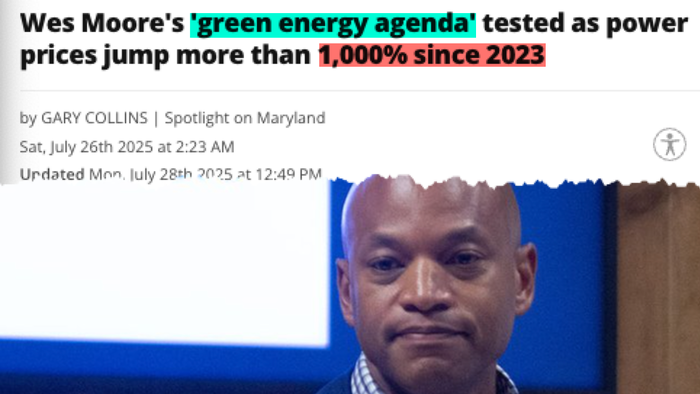Democratic leaders across the Mid-Atlantic and Northeast have truly reached a critical juncture. Their ambitious and often reckless decarbonization agenda is backfiring spectacularly, driving power prices to some of the highest in the nation and financially crushing the very working-class families they claim to champion. This unsustainable trajectory raises profound questions about the viability of current energy policies and their real-world impact on citizens.
In Maryland, a state long under the control of radical left-wing Democrats, Governor Wes Moore and his administration are scrambling to deflect mounting dissent as power bill costs erupt. Far from being stewards of good governance, these figures are perceived by many as far-left activists whose policies are steering Maryland toward a multi-faceted disaster, encompassing a deepening power crisis, ballooning deficits, escalating crime rates, and the complexities of sanctuary state chaos. The situation resembles a ship’s captain steering full speed towards an iceberg, oblivious to the impending collision.
The obsession with globalist green energy policies, often coupled with globalist open borders, has transformed Maryland’s local grid into an unstable mess, frequently likened to that of a third-world country. This systemic vulnerability is exacerbated precisely as energy demands surge, driven by the rapid proliferation of AI data centers and the widespread adoption of electric vehicles (EVs). State Democrats, seemingly blinded by a “climate crisis woke vision,” fail to grasp the epic mismatch between skyrocketing energy demand and stagnating baseload capacity, compounded by their aggressive shutdown of crucial fossil fuel generators.
In a contentious move, Governor Moore publicly cast blame on PJM, the region’s grid operator, for blocking new power plants and raising electricity bills. He has even signaled intentions to pursue legal challenges against PJM, portraying them as the sole impediment to affordable energy. This narrative suggests a deliberate effort to externalize responsibility for the state’s escalating energy woes, diverting attention from internal policy decisions.
However, this narrative is sharply contested by figures like Maryland Delegate Ryan Nawrocki, a Republican from Baltimore County. Nawrocki vehemently dismisses Moore’s claims against PJM as “absurd,” emphasizing that PJM’s core mandate is to ensure ample supply on the grid. According to Nawrocki, the true forces behind surging electricity prices are the premature closure of existing power plants and the push for “unaffordable and unrealistic energy ideas” such as offshore wind projects. He asserts that when effective plans are absent, the default strategy becomes externalizing blame.
Governor Moore’s leadership style, critics argue, is less about effective governance and more about adhering to a pre-written Democratic Party script, replete with slogans like “green is good” and “fossil fuels are bad.” This approach is seen by some as an attempt to appease influential leftist billionaires and strategically position himself for a potential 2028 presidential bid, rather than prioritizing the immediate needs and financial well-being of Maryland residents.
The consequences of Moore and the Democratic Party’s decision-making are severely impacting state residents, who are now grappling with some of the nation’s most expensive power costs. This unfolding power crisis across the Mid-Atlantic and Northeast vividly illustrates how rapidly green energy policies can backfire, leading to significant financial hardship for ordinary families. As electricity bills continue to soar, the current administration’s attempts to deflect blame are met with increasing skepticism from voters, who are now demanding accountability for these systemic failures at the ballot box.






Leave a Reply